PDF of this article (274 KB)
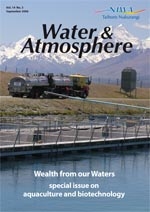
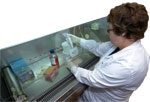
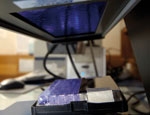
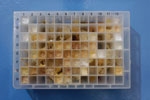
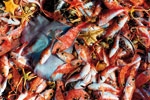
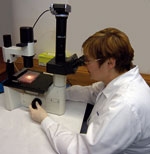
NIWA is working with Ngāi Tahu Seafood to develop natural skincare products from waste products of the seafood industry. Fiona Proffitt tells the story.
Ever thought of using fish eyeballs as a face cream? The idea may seem far-fetched, but is not as silly (or gross) as it sounds. More and more consumers want natural skincare products that are enhanced with biologically active compounds (‘bioactives’) – whether they be antioxidants that reduce the signs of ageing, or natural UV-protectors that can penetrate skin cells. Fish eyeballs are just as likely to contain these bioactives as any other living tissue, and they’re currently not being used for anything but fishmeal.
Natural skincare
NIWA’s biotechnology team is involved in an innovative project with Ngāi Tahu Seafood to rapidly develop new skincare products from seafood ‘waste’. This includes bycatch (non-commercial species that get mixed up with commercial catches), and the parts of fish that aren’t processed into food, such as the skin, eyes and organs. The five-year project, ‘Whatukura a Takaroa: Nutraceuticals from Seafood’, began in 2002 and is being funded by the Foundation for Science, Research & Technology.
Nutraceuticals are natural products that contain bioactive compounds with health-promoting, disease-preventing, or other medicinal properties. The term was initially coined from a combination of the words ‘nutrition’ and ‘pharmaceutical’ because in the early days of nutraceuticals it mostly applied to foods enhanced with natural, health-giving additives (e.g. spirulina drinks and cholesterol-lowering margarine). Now nutraceuticals encompass a wide range of products, including baby foods, health drinks, skincare products, and medicines.
Oceans of potential
So far, most nutraceuticals are based on bioactives derived from plants and other land-based organisms. But, given the high levels of biodiversity in the world’s oceans, there is enormous (and largely untapped) potential for discovering new bioactive compounds from marine organisms. Because of New Zealand’s clean green image and abundant marine life, we are ideally placed to take advantage of a growing and lucrative market for nutraceuticals.
According to Geoff Hipkins, Ngāi Tahu Seafood’s General Manager, deriving these products from fish waste has the advantage of adding value to something that is currently discarded or turned into comparatively low-value fishmeal. This not only appeals to consumers concerned about reducing waste, but also contributes to the sustainability of our fisheries by getting more value out of each catch.
The search for bioactives
Ngāi Tahu Seafood is supplying some of the fish processing byproduct and bycatch for the project, and brings expertise in commercialising marine products. NIWA’s biotechnology team extracts samples from parts of the fish normally discarded after processing fillets (head, liver, gut, skin, bones, and eyes) but which still contain valuable proteins, fats, carbohydrates, and numerous small compounds. Small pieces of tissue are dried and ground to help extract any bioactive compounds present.
All of the samples then go through a number of different screens or ‘assays’, which include biochemical reactions and tests on living cells from tissue cultures, to identify their bioactive properties. The assays include tests for antioxidants that help prevent skin ageing, and for vasodilators that help increase blood flow in the skin by dilating blood vessels, thereby promoting the removal of toxins that accumulate as a result of daily wear and tear. The screens for vasodilators also show up compounds that constrict blood vessels, which could be useful for reducing skin redness. We’re also looking for extracts that stimulate cell division and the formation of collagen (the main skin protein) to promote skin repair. And, perhaps most importantly for New Zealand consumers, we’re looking for bioactive agents that protect against UV damage.
After this initial screening, we identify the chemical structure of any bioactive compounds present. Once the compounds have been shown to be non-toxic, they can go into the formulation of skincare products.
Promising early results
We have so far tested more than 2700 samples from 130 different fish species for bioactive compounds. We’ve discovered some form of bioactivity in 146 samples and fully identified the chemical structure of 4 compounds. Within the low-value fish species identified by Ngāi Tahu Seafood as targets for adding value, we found 43 bioactive extracts that stimulated cell division and/or had UV-protective or antioxidant properties.
The 10 UV-protective extracts are looking particularly promising. Preliminary tests showed that several of these worked both as a screen on the cell surface, and by bringing about positive chemical changes within the cells. Whereas existing sunscreens rely on filtering the sun and can cause allergies, we’re hoping to develop a natural sun protector that can penetrate the skin and protect it from the inside out. We’re now testing the stability of fish extracts and investigating possible UV-protective mechanisms at the cellular level.
Developing new products
All of the samples that tested positive for bioactivity are undergoing analysis by our natural products chemists to determine the chemical structure of the bioactive compounds. The best samples will be developed into skincare formulations, which will involve (among other things) removing any lingering fishy smells!
This project aims to help the seafood industry diversify into a new and lucrative market for marine-based skincare products and turn fish waste into a real money-spinner.
Something fishy here
- The booming market for nutraceuticals – natural products with bioactive compounds – is mostly based on plants and land-based animals.
- NIWA is testing thousands of samples of fish tissue in search of bioactives.
- As a result, fishery byproducts may find a more valuable destiny than fishmeal.
Dr Fiona Proffitt [[email protected]] is a science journalist working at NIWA in Wellington. This project is led by NIWA biotechnologist Dr Anna Kilimnik [[email protected]], who also works in Wellington.
Teachers’ resource for NCEA AS: Biology 90167 (1.7) Science Level 2 US90766, Level 3 US6355. See other curriculum connections at www.niwa.co.nz/pubs/wa/resources
